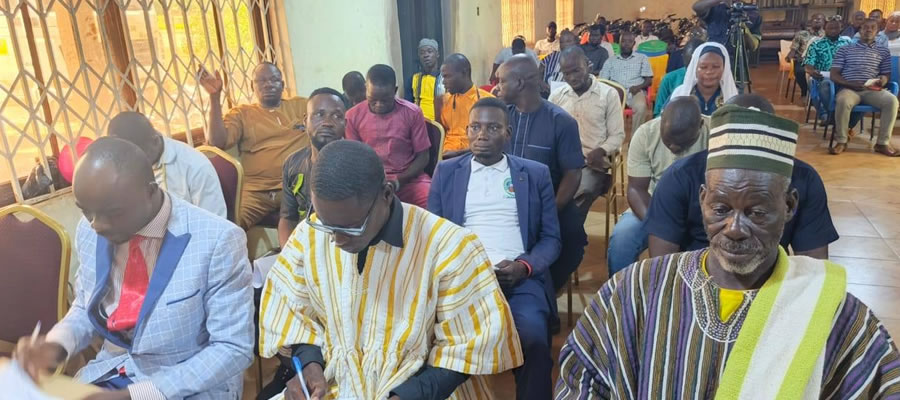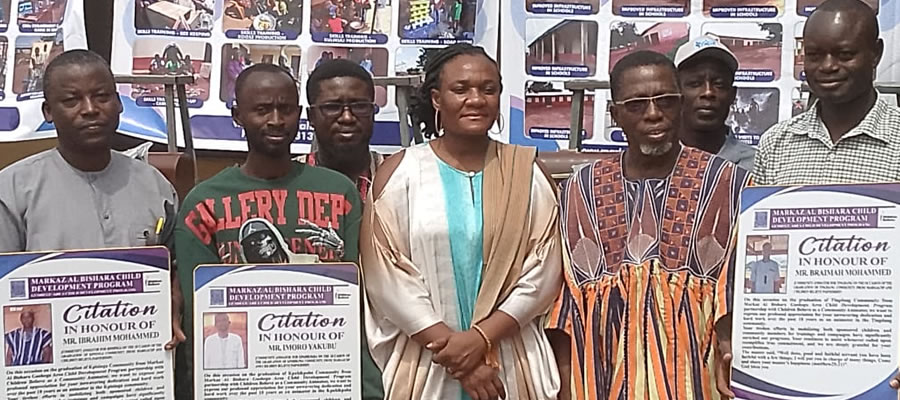

The positive correlation between education and development has been amply validated the worldwide. It has been established that illiteracy and poverty are bedfellows. In Ghana, this is clearly manifested in the three northern regions where illiteracy is positively correlated with high poverty levels. Education is therefore the key to development. In order for us to consciously reduce poverty, there is the need to improve the educational system in the Municipality.
The FCUBE Policy
The current education policy in the country revolves round the FCUBE concept. The concept has three main components, that is;
- Management for Efficiency and Effectiveness;
- Access and Participation;
- Effective Teaching and Learning.
Management for Efficiency and Effectiveness
Discussion under management for efficiency will focus on the structure of the Municipal education directorate and its supervisory activities.
The Municipal Education Directorate (GES)
The management of the formal education system at the district level is in the care of the Ghana Education Service (GES). A Director is the administrative and technical head of the office. There are four departments in the service that help the Director in the management of education in the Municipality, these are;
• Statistics and Research
• Planning and Budget
• Administration and Manpower
• Supervisory Division
The statistics unit is responsible for data collection and processing for decision-making. The planning and budget unit is responsible for planning education in the Municipality as well as for budgeting for the educational needs of the Municipality. An important unit in the office is the supervisory division, which periodically undertakes supervision and monitoring of schools, teachers and performance of pupils and the educational system in general. Under the management for efficiency, certain structures have been established to ensure effective implementation of the educational policy. These are
• The District Oversight Committees Education (DEOC)
• The District Education Planning Team (DEPT)
• The School Management Committees
Effective Teaching and Learning
This component focuses on quality of education imparted and learned. The Municipality currently has one Senior Secondary School that serves the whole Municipality, six Junior Secondary Schools located spatially in the Municipality and seventy-one (71) Primary Schools. There are 11,571 pupils and student population in the Municipality.
The state of teaching staff in the Municipality is not good. In general there are 359 teachers in the Municipality out of which only 42.6% are trained. The gender disparity is worse as only 7 of the trained are women. Superficially, the Teacher/Pupil Ratio in the Municipality seem to be good which is 1:32 against the national average of 1:33. However a close look at quality teaching reveals a different story. The number of teachers with the requisite training against pupils is very high at 103:1. The implication of majority of untrained teachers in the Municipality is that teaching and learning will not be effective as the right methodologies will not be applied.
In order to enhance teaching and learning in the Municipality, the Municipal Assembly has over the last three years sponsored the training of potential teachers who are citizens of the Municipality to Teacher Training Institutions. The first of 7 students who benefited are in their third year, 26 in the second year while over 30 are in the first year.
In the last School Performance Test carried out in the Municipality, the mean score for English for males was 39.43 while the score for females was 36.77. Mean score for boys in mathematics was 42.65, while that of girls was 41.55. In general, the performance of the Municipality was poor considering that both results were not close to an average of 50%. The performance of boys in both cases is better than for girls. This is an indication that more attention should be paid to the girl-child in class.
The poor result of the baseline survey is a reflection of the Basic Education Certificate of Examination Results (BECE) and the Senior Secondary School Certificate SSSCE that the Municipality recorded in the last three years. In 1999, out of a total of 263 candidates submitted for the BECE examinations, only 70 candidates (27%) passed with aggregates between 7-30. Girls accounted for only 10% of this. Two boys had very good grades of below aggregate 15. There was improvement in the 2000 examination where 43% of candidates passed in aggregates between 7-30. There was equally an improvement in the performance of girls with 30% of them obtaining aggregates below 30. The results of the 2001 was a marked improvement over the 2000 one with 100% of students passing. A total of 13 boys had aggregates between 7-15 while 39 (81%) girls had grades between 16-24.
The trend of performance in the SSCE is rather worse in1 999. Only 10.61% passed in six subjects. Majority of (19.69%) passed in only two subjects. The performance of the girls was very poor. While 8 candidates were submitted, one student each passed in 5 subjects and 1 respectively. Five of them failed completely. The results of both the BECE and SSSCE results are a clear manifestation of the poor academic standards in the district. While in some districts the focus and significance of results is on the “number of students who scored aggregate 6 in six subjects and A’s”, results of the Gushegu Municipality is on “number of passes in subjects”. The quality aspect of the results is completely missing.
The implication of this state of affairs is that few, if there is any at all, will be able to avail themselves to tertiary levels. It means that the Municipality in the next decades will continue to rely on skillful people from outside the Municipality. Poverty in the Municipality will continue to thrive very well if the scenario of results is the same.
The infrastructure situation of schools is very poor. Out of the 67 schools in the Municipality, only 14 have proper structures constructed to standards with cement. Eight (8) are pavilions with walls, while 9 are without walls. The rest are mud, sheds and open-air schools. The furniture situation is not different as only a few schools have proper furniture. In terms of access, 43% of the population is within the defined 5 kilometer range of primary schools in the Municipality.
Access and Participation
To enhance the ownership and management of education at the community level, communities have long been in partnership with schools with the formation of Parent Teacher Associations (PTAs) to support the management of schools. The FCUBE concept goes further to establish School Management committees (SMC) and District Oversight Committees Education (DEOC). There are 65 well-functioning SMC in the Municipality.
Girl Child Education Program
In the last few years, girl-child education has received attention from development partners. In particular, the Federation of African Women in Education (FAWE), the Campaign for Female Education (CAMFED) and Regional Advisory and Information Network (RAINS) have supported the girl-child in terms of scholarships, school uniforms, books and so on.
The QUIPS program of the Catholic Relief Services has also supported the Municipality in the enrollment and retention drive through the provision of food, furniture and other logistics.
The FCUBE has now become the main policy that drives education in the country. Although the policy is on course, the free aspect of the policy has not found expression at the community level. In spite of this and other constraints to education in the Municipality, there is enthusiasm among the people as reflected in the enrollment drive over the years. There are also a reasonable number of school infrastructures existing in the Municipality including stores, equipment, vehicles and motor bikes.
Date Created : 11/18/2017 5:03:54 AM









 facebook
facebook
 twitter
twitter
 Youtube
Youtube
 +233 593 831 280
+233 593 831 280 0800 430 430
0800 430 430 GPS: GE-231-4383
GPS: GE-231-4383 info@ghanadistricts.com
info@ghanadistricts.com Box GP1044, Accra, Ghana
Box GP1044, Accra, Ghana